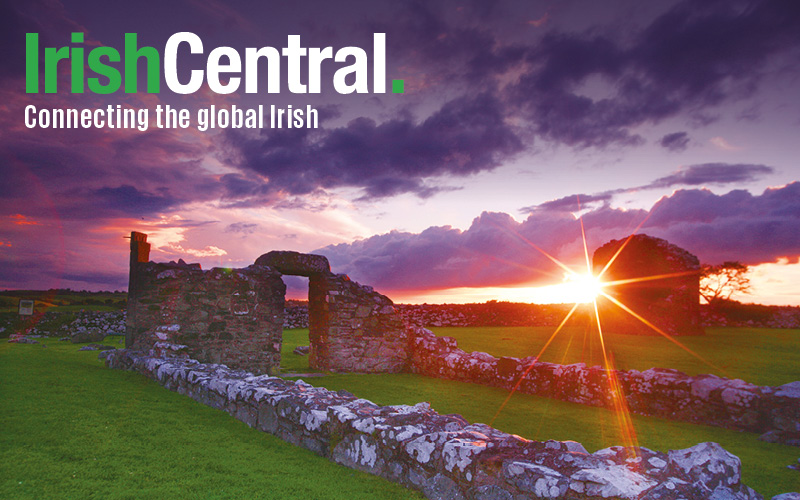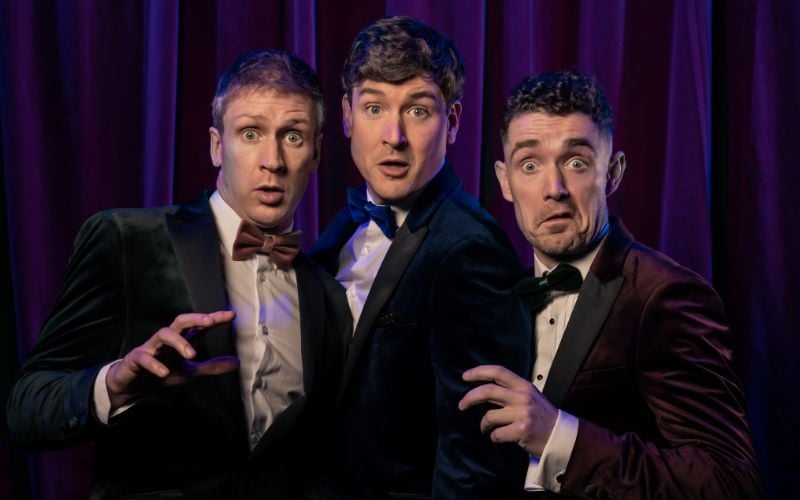ST. Patrick's Day is the time when we wear the shamrock, have a few drinks, sing a few songs, bring the kids to the parade (or sit at home and watch it on the telly) and generally get in touch again with our Irishness, that common core of goodwill and generosity that makes us what we are.
Or at least most of us do. But there is a sizable part of Irish society today that can't get in touch with their inner selves because inside they're empty. They're mostly working class, male and under 30.
They're alienated, disenchanted, short-tempered, angry and prone to extreme vandalism and violence at the slightest provocation. For them St. Patrick's Day is a time when they can stoke their resentment with drink and drugs, and then explode into random attacks against a society they hate. For Ireland's mindless, violent underclass, St. Patrick's Day is a time for revenge.
So what happened on this St. Patrick's Day? In the center of Dublin where the main parade took place the festival was a huge success, good humored, fun, safe and enjoyable for young and old. That was helped by the voluntary decision by bars and off licenses not to open for business until the afternoon.
In contrast to the situation some years ago, there were few arrests for drunkenness or violence during the day. There were plenty of Gardai (police) on the streets - 800 had been drafted in from areas around the capital to keep order in the city center - and that helped.
But all that started to change as soon as darkness fell. Large mobs of young people arrived into the city center area, some of them already out of their heads on drink and drugs. By closing time, those who had been only half drunk earlier on were now fully tanked up and and spoiling for a fight.
From midnight until the small hours, there was mayhem, a drunken orgy of violence and destruction. Gardai from just one of the city center police stations made over 70 arrests in that time period of a few hours. One English tourist had a finger bitten off when he was attacked by a group of about six local youths.
Out in some of the suburbs, especially in the sprawling working class estates, it was even worse, partly because a lot of the Gardai from these areas had been siphoned off into the city center. In one big working class area on the north east side of the city called Finglas there was a full scale riot with up to a hundred young males involved.
This centered around what is now a tradition in the area on St. Patrick's Day, the racing and burning of stolen cars. In an effort to stop this, the Gardai had discovered that local teenagers had already stolen several cars in the preceding days and had them hidden in derelict ground in south Finglas, stored for St. Patrick's night. The Gardai moved in and impounded the cars.
But instead of giving up, the gangs then started stealing cars on the spot and hijacking passing vehicles. In one incident, a driver was dragged from his car and savagely beaten. By midnight in the area there were burning cars on several streets and running battles between different gangs.
The difficulty in situations like this is that when the Gardai respond their patrol cars are attacked not just by the young males who are fighting, but by all the other kids who are just standing around. Everyone unites against "the enemy," and fire engines sent to deal with the blazing vehicles meet the same welcome and are pelted with bottles and bricks.
At least two petrol bombs were thrown by the rioting teenagers at patrol cars in the area on St. Patrick's night. According to the Gardai at least seven cars were stolen, raced around and then set on fire.
Once this kind of mayhem gets started, the teens text each other and kids from adjoining areas start arriving, swelling the numbers. Meanwhile, the people who live in these areas stay inside their houses behind locked doors, afraid to go out. In the South Finglas area on St. Patrick's night, according to the Gardai, there were up to 200 young males either directly involved in or watching the riots.
What happened in Finglas was the worst, but other areas around Dublin (and other cities around the country) were also affected by the madness on St. Patrick's night. In another big working class housing area on the west side of the city called Ballyfermot there was another riot.
The Sunday Independent quoted one senior Garda who was there as follows, "I have never in all my career seen so much blood. They were mostly superficial injuries as it turned out, but it was horrific. It was like a slaughter house."
Another Garda who had been on duty in the city center told a reporter from the same paper, "Alcohol, alcohol and alcohol ... and cocaine. The cocaine is causing the escalation of violence. We now have to deal with the phenomenon of young men drunk and coked out of their heads just attacking people for no reason."
That is what is truly scary about this. It's the mindless, hopeless character of what is happening among a certain group in certain areas in Irish society today that is frightening.
Nor is it confined to peak times like St. Patrick's night. Also last week there was another murder in which a taxi driver was attacked by a young man late at night. The young man had been a passenger, but when he got to his destination he attacked the taxi driver with a screwdriver, chasing him down the street, stabbing him in the back and neck and killing him.
People here shake their heads in despair and say it's happening too often, that you would be afraid to go out at all. As the Garda said, people are getting attacked for no reason.
The truth is, however, that there is a reason. There is a reason why there is a whole underclass of young males here who are alienated and angry and who see "society" as their enemy. There is a reason why they vent their anger on St. Patrick's night in mindless and horrific violence.
The reason is multi-faceted and complicated. These young males are strangers in their own country (which may be one reason why they see St. Patrick's Day as the perfect day for striking back).
They are under-achievers and early school leavers, unwanted in an Ireland in which bright young Poles and Lithuanians, most with a high school education if not a degree, take all the ordinary jobs in stores and bars and restaurants and on building sites.
The new immigrants are intelligent, willing, hard-working, polite, clean and reliable. In contrast, the Irish teens from this underclass are young men with brains so fried from drink and drugs that they can barely get out a coherent sentence, and they cannot stay focused on a job.
The immigrants are enthusiastic and grateful. The Irish are cynical, disruptive and unreliable.
Why should they work? There's always the welfare - and on that issue our well meaning society has a lot to answer for in terms of taking away the initiative from a whole section of our society.
A lot of the teens and young men who were rioting here on St. Patrick's night will have grown up in houses where the parents rarely worked, where alcohol was a problem, where the kids were left to fend for themselves a lot of the time.
In schools where they should have been taught the value of being a good Irish citizen they will have been put through a meaningless class in the Irish language everyday, a rich irony since most of them can't write much more than their names in English.
They have been let down by our antiquated school system which is failing to teach them the value of achievement, and failing to cut through their detached cynicism and give them a sense of personal pride and worth.
It's one of the anomalies of the Celtic Tiger, the emergence of this new underclass of hopeless, mindless, violent Irish youth with no allegiance to anything and no ambition other than the next drink or the next drug or amusing themselves by beating someone up, or even kicking or stabbing someone to death to mark our national saint's day.




Comments